T.N.T.'s



web camp
"Dedicated to the education of G.I. Joe"
|
T.N.T.'s
web camp "Dedicated to the education of G.I. Joe" |
Will Toomey's
Prototype Collection
![]()
Grunt - 1982
( 2-Up Clay Head )
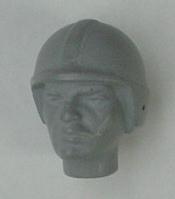
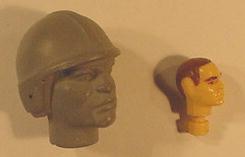
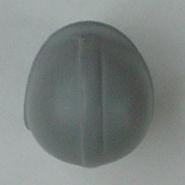
The above pictures illustrate a 2-UP clay bake mold of what
would eventually
become the head for the original Grunt. This was sculpted well in
advance of the production of the original Real American Hero series and
may have been the first ever Real American Hero character.
There are a few differences worthy of note with this piece. First the
helmet is part of the actual head mold of the figure. Eventually it
would be decided that the figures would have removable helmets and this
concept was scrapped. Also the helmet itself differs from the actually
released helmets in that it has a realistic ridge detail which runs down
the center of the helmet and branches off in the back.
This head was saved by Hasbro Vice President Kurt Bozigian. Will is the
second owner.
![]()
Duke - 1995
( Light Green / Dark Green Test Shot )
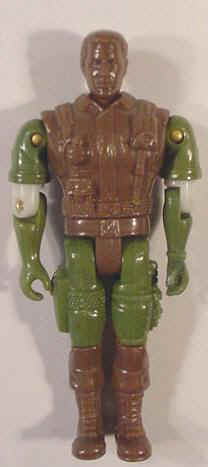
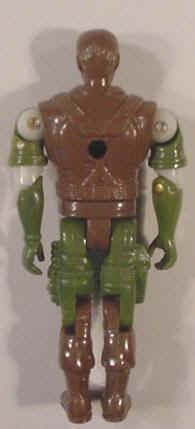
( Light Green / Light Blue Test Shot )
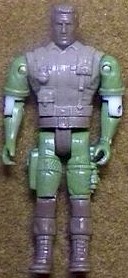
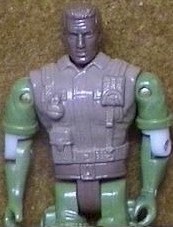
An experimental figure design of Duke which never
went into production. Before the Real American Hero line was temporarily
canceled from '95 to '96, this new 3 3/4" design was constructed and its
many differences were considered as alternatives to the designs which
had dominated up until this time.
There are 5 major differences between this figure and the Joes we all know.
1. The waist design on this figure eliminated the rubber band. Possibly
this figure would eventually be able to twist it's torso at the waist
(in a fashion like a He-Man figure, but without the spring action), but
on this prototype it does not (there is no waist movement).
2. The legs (where they connect to the waist) have 90 degree flat
movement much like that of a vintage Star Wars figure, allowing for less
mobility.
3. The torso is much larger than normal, giving Duke a buff appearance
reminiscent
of the disproportion in the G.I. Joe Extreme or Sgt. Savage figures. Click
here to see the comparison.
4. The shoulder joints are of a new design yet function similarly to those of
normal Joes.
5. The knee joints are of a new design. With this prototype, the metal
leg screws/rods are responsible for the knee movement.
This design never made it beyond the test mold shown here. No stamps are
present on this figure.
![]()
Un-named - 1995
( "TRON Joe", possibly Sci-Fi version 5 )
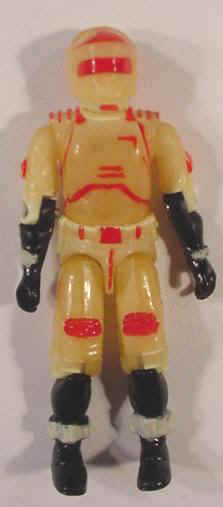
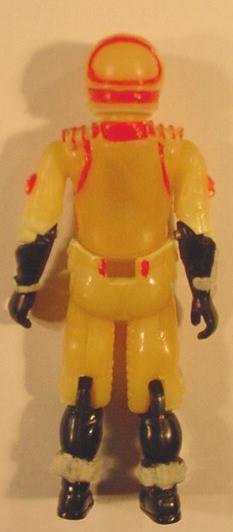
An unproduced and unnamed experimental design
figure. This figure uses the waist, head, torso, upper arm, and upper leg
molds
of the 1986 Sci-Fi, and the forearm and lower leg molds from the 1985
Snake Eyes.
The figure is hand constructed, and was part of a design development
effort to create a fantastic figure concept which never actually came to
light. It is constructed with plastic, as opposed to the more delicate
resin and clay materials you often see with other pre-test-shot
prototypes. The majority of the plastic is a semi-translucent yellow,
and there are hand painted red and glow-in-the-dark paint highlights.
Significant work was done on the torso molds of this figure for a very
interesting purpose. As is visible from the back, the figure has no
screw port. In fact, all of the ridges and other internals which you
find inside a Joe's torso have been removed from the sculpt's molds. To
keep the figure from falling apart the chest and back pieces have been
glued together, and the torso has been glued to the waist piece. The
metal hook which holds the legs to the body with a rubber band has also
been removed. The remaining metal rod which connects the legs is glued
to the inside of the groin. The groin piece on this figure runs all the
way to figure's butt with no disconnection, as opposed to production
Joes which have a small gap there.
There is a cube removed from the figure's back waist piece. This was
actually done to the mold before this waist piece was made via plastic
injection. (there are no signs of actual cutting on this waist piece).
Additionally, the lack of screw holes in either the figure's back or the
inside of the figure's legs provides evidence that the original molds
from Sci-Fi had to be resculpted to make this figure. Where there would
eventually be screw holes on the inside of his upper legs, detailed
padding appears, which would not have appeared on the production-run
Sci-Fi's test shot, or probably even his resin-injection shot or clay
mold. Also there is no sign that a screw hole or internal ridges ever
existed on the figure's torso pieces. Additionally, the details which
normally appear on Sci-Fi's chest plate and almost all of the detail on
the back have been eliminated from this figure.
The hole in the lower back of this figure was probably situated to allow
for the attachment of an apparatus which would produce sparks, moving
parts, or some other form of visual action within the figure's torso.
This would explain the gutting of the torso and the use of translucent
plastic. Unfortunately this device is not present and the end purpose of
this figure's design will most likely never be known. Kind of like man's
appendix.
![]()
If you own any prototypes, or would like to share information further, please contact Ron snakeeye@gte.net
Back to see more prototypes
Home to the G.I. Joe Web Camp